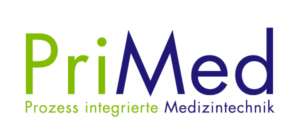Process Optimization through Integrated Medical Products in operating theatres and clinics


In the OR.NET project, providers of integrated operating theatres worked together from 2012 to 2016 with manufacturers of medical products such as medical devices and medical technology components as well as (IT) service providers and software manufacturers. They were supported by numerous research institutes and clinics. Clinical partners include specialized clinics as well as hospital IT departments and equipment operators in the project.

The aim of the initiative is to develop, evaluate and synchronize basic concepts for the safe dynamic networking of components in operating theatres and hospitals on the basis of an open standard with current national and international standardization activities in the pre-competitive area of medical technology research and development. The networking of computer-controlled medical devices in the OR and the interaction of these devices with medically approved software is a particular challenge for the information and communication industry in the medical application environment.

The aim of the project was to develop a technical-methodical approach that supports the approval and certification process as well as the risk management of networked medical devices in integrated operating theatres and thus also enables small and medium-sized companies in the medical technology sector to access the market.

The networking of the many computer-controlled medical devices available in a modern operating room (OR) has been gaining in importance for years, because it is the only way to meet the clinical need for more safety, efficiency and ergonomics in the OR. A challenge so far was the networking of devices from different manufacturers.

The project “Process optimization through integrated medical devices in the operating room and clinic” – or PriMed – addressed the problem of the lack of manufacturer-independent, secure networking between devices and the exchange of information between specialized disciplines. In order to create added value in the sense of process optimization in the OR and clinic, device-specific information and functionalities must be accessible across disciplines and departments.

The digital transformation in the healthcare sector offers great opportunities to improve the quality of care in operating theaters and clinics. The number of medical devices in operating theatres and adjacent departments such as recovery rooms and intensive care units is constantly increasing – up to 40 different medical devices from different manufacturers are already in use in each operating theatre. These individual solutions prevent comprehensive data exchange and standardized device operation. Against this background, the open and manufacturer-independent networking of medical devices in accordance with the new ISO IEEE 11073 SDC (Service-oriented Device Connectivity) standard represents a promising solution. This technology has the potential to revolutionize and significantly relieve the healthcare market through the use of synergy effects. Networking leads to data fusion, automated documentation and standardized user interfaces and thus to an improvement in clinical processes.

In OR.NET e.V., representatives from industry, hospitals and research have joined forces to realize the openly networked operating theatre of the future.
News
Contact
c/o SurgiTAIX AG, Kaiserstr. 100, 52134 Herzogenrath
+49 2407 555 999 0
info@ornet.org
https://ornet.org

